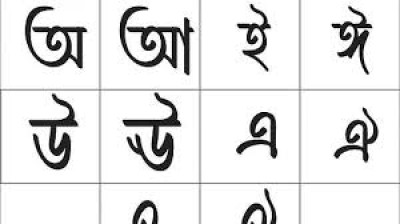Top 50 Languages Of Assam Gk Questions And Answers For Competitive Exams.



It also includes topics like language recognition, scripts, official language status, and dialect variations. Whether you’re a student or a knowledge enthusiast, these questions provide valuable insights into Assam’s linguistic heritage and help improve your general knowledge for competitive exams.
Top 50 Languages of Assam GK Questions and Answers
1. Q: What is the official language of Assam?
A: Assamese
2. Q: Which language is recognized as the associate official language of Assam?
A: Bodo
3. Q: The Bodo language belongs to which language family?
A: Tibeto-Burman family
4. Q: In which script is the Assamese language written?
A: Assamese script (a variant of Eastern Nagari script)
5. Q: The Bodo language uses which script?
A: Devanagari script
6. Q: When was Assamese declared as the official language of Assam?
A: 1960
7. Q: Which language is spoken predominantly in Bodoland Territorial Region (BTR)?
A: Bodo
8. Q: The Mishing language belongs to which language family?
A: Tibeto-Burman
9. Q: Which tribe of Assam speaks the Karbi language?
A: Karbi tribe
10. Q: What is the primary script of Assamese literature?
A: Assamese script
11. Q: The Dimasa language is mainly spoken in which district?
A: Dima Hasao
12. Q: Which community speaks the Tiwa language?
A: Tiwa (Lalung) community
13. Q: Which is the second most spoken language in Assam after Assamese?
A: Bengali
14. Q: In which year was the Bodo language included in the Eighth Schedule of the Indian Constitution?
A: 2003
15. Q: What is the classical dance form that uses Assamese as its main language?
A: Sattriya Dance
16. Q: What is the ISO 639-1 code for the Assamese language?
A: as
17. Q: Which ancient Assamese text is considered the earliest specimen of Assamese language?
A: Charyapada
18. Q: Who is regarded as the father of modern Assamese language?
A: Hemchandra Barua
19. Q: What is the major dialect of Assamese spoken in Upper Assam?
A: Eastern Assamese
20. Q: Which district of Assam has a large number of Nepali-speaking people?
A: Sonitpur
21. Q: What is the oldest known Assamese dictionary?
A: Hemkosh
22. Q: Who compiled the Hemkosh dictionary?
A: Hemchandra Barua
23. Q: Which Assamese dialect is influenced by Bengali?
A: Goalpariya dialect
24. Q: The Rabha language is spoken mainly in which regions?
A: Goalpara and Kamrup districts
25. Q: Which community of Assam speaks the Deori language?
A: Deori community
26. Q: The Tai-Ahom language belongs to which linguistic family?
A: Tai-Kadai
27. Q: Which script was used in ancient Tai-Ahom manuscripts?
A: Ahom script
28. Q: Which language is spoken by the Dimasa tribe?
A: Dimasa language
29. Q: What is the main script used for writing Assamese and Bengali?
A: Eastern Nagari script
30. Q: Which festival in Assam promotes the use of local dialects and folk songs?
A: Bihu
31. Q: Who introduced the modern printing of Assamese language books?
A: American Baptist Missionaries
32. Q: Which Assamese magazine was first published in 1846?
A: Orunodoi
33. Q: What was the main purpose of the Orunodoi magazine?
A: Promotion of Assamese language and culture
34. Q: The Kachari language is mainly spoken in which parts of Assam?
A: Northern and Central Assam
35. Q: What is the linguistic root of the word “Asomiya”?
A: Derived from the Ahom tribe
36. Q: Which language is taught as an elective subject in Gauhati University?
A: Bodo
37. Q: Who translated the Bible into Assamese for the first time?
A: Nathan Brown
38. Q: What was the year when “Asomiya Bhashar Unnati Sadhini Sabha” was established?
A: 1888
39. Q: Which Assamese writer played a major role in preserving the Assamese language during British rule?
A: Anandaram Dhekial Phukan
40. Q: The Moran and Motok tribes speak dialects close to which language?
A: Assamese
41. Q: The “Bihu Naam” songs are sung in which language?
A: Assamese
42. Q: The Dimasa Kachari people belong to which linguistic group?
A: Tibeto-Burman
43. Q: Which Assamese writer compiled “Chandrakanta Abhidhan”?
A: Chandrakanta Abhidhan
44. Q: Which language is closely related to Assamese linguistically?
A: Bengali
45. Q: Which script is officially used for the Mishing language today?
A: Roman script
46. Q: Who wrote the book “Asomiya Byakaran”?
A: Hemchandra Barua
47. Q: What is the native language of the Tiwa community?
A: Tiwa language
48. Q: The Assamese and Bengali languages originated from which ancient language?
A: Magadhi Prakrit
49. Q: What is the official language used in the Assam Legislative Assembly?
A: Assamese
50. Q: Which Assamese dialect has a distinct intonation and vocabulary influenced by tribal languages?
A: Central Assamese dialect
Disclaimer*: The Assam General Knowledge questions and answers provided on this page are intended for educational and informational purposes only. While every effort has been made to ensure the accuracy and reliability of the information, AssamInfo.com does not claim absolute correctness or guarantee that the data is free from errors. Users are advised to cross-verify facts from official government sources, textbooks, and exam notifications. AssamInfo.com will not be responsible for any loss, error, or misunderstanding arising from the use of this content. This material is meant solely to assist students and exam aspirants in their general knowledge preparation.